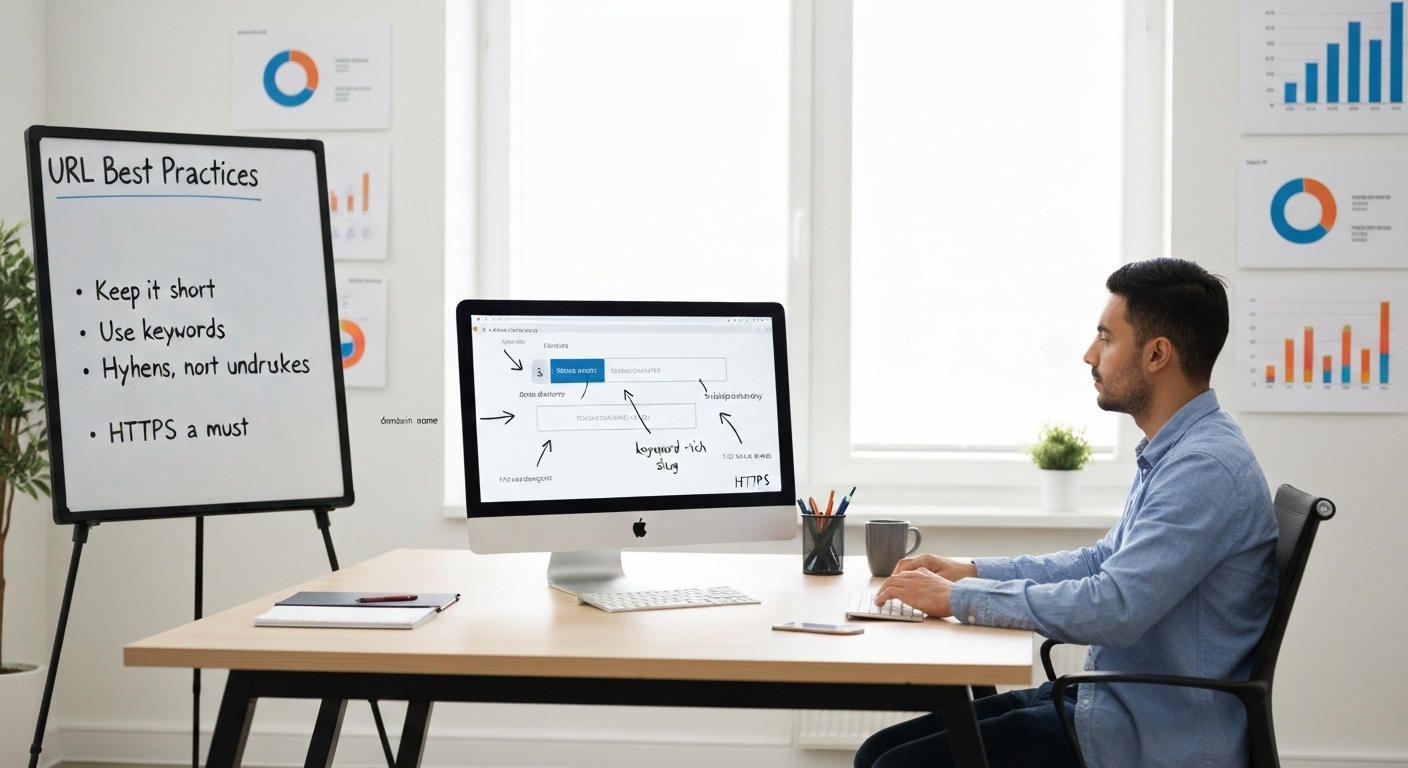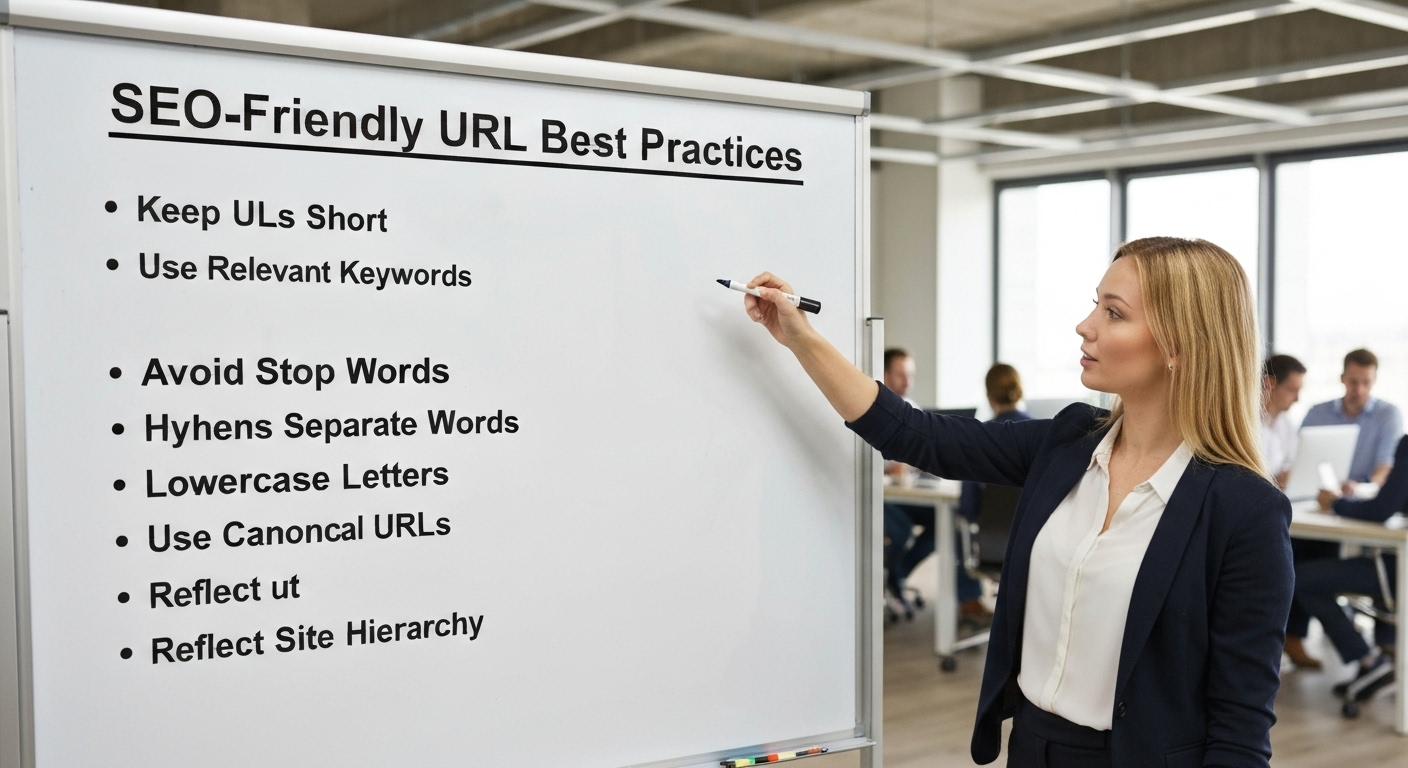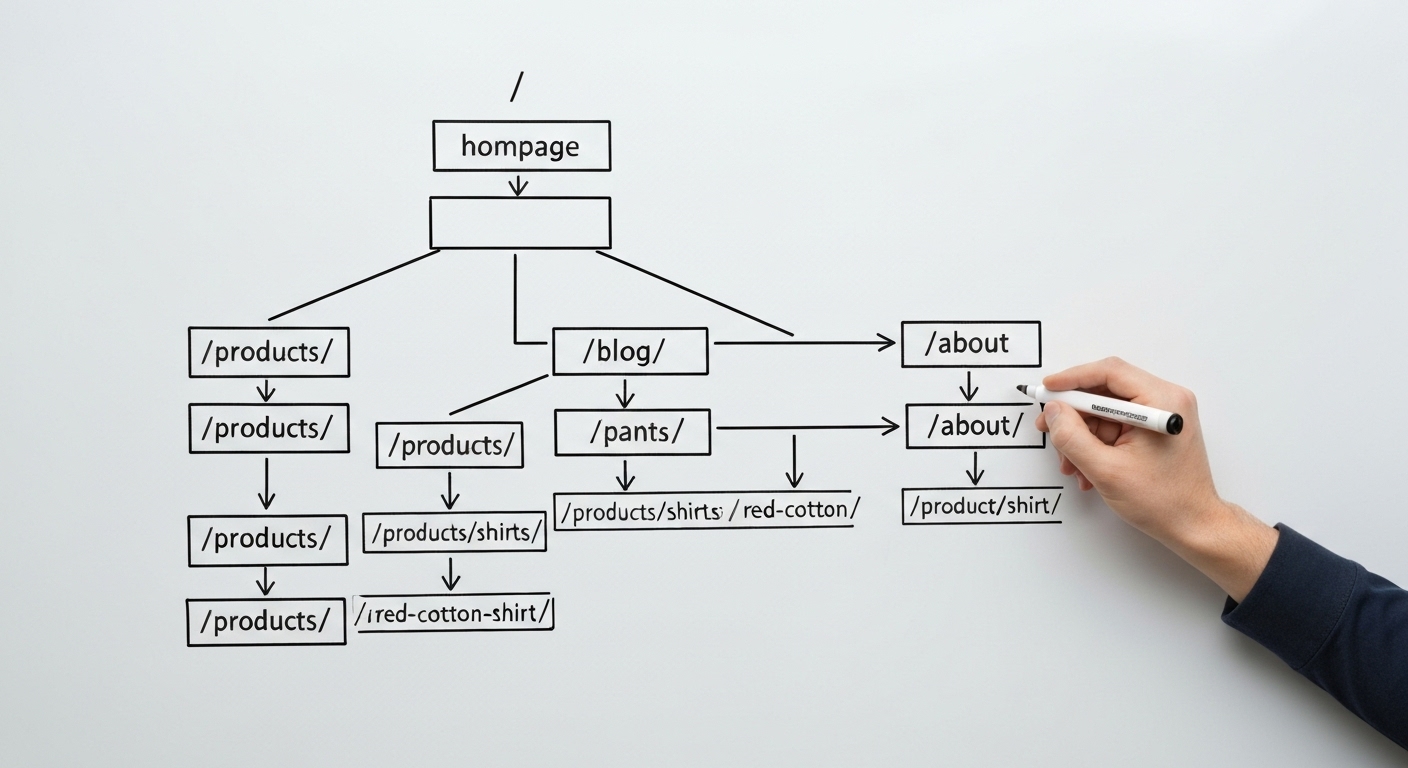URL Structure Best Practices for SEO : A Comprehensive Guide
URL structure best practices for seo. Optimizing your website’s URL structure is a fundamental aspect of search engine optimization (SEO) and user experience (UX). A well-structured URL not only helps search engines understand the content of your pages but also makes it easier for users to navigate and share your website.

Why URL Structure Matters for SEO
Search engines like Google use URLs to understand the content and context of a webpage. A clear, concise, and keyword-rich URL can significantly improve your search engine rankings. Furthermore, user-friendly URLs enhance the overall user experience, leading to lower bounce rates and increased engagement.

Benefits of Optimized URLs
- Improved Search Engine Rankings: Search engines can easily understand the content of your pages.
- Enhanced User Experience: Clear and readable URLs make it easier for users to navigate your website.
- Increased Click-Through Rates: Descriptive URLs can entice users to click on your search results.
- Better Website Organization: A well-structured URL hierarchy reflects the organization of your website.
SEO Friendly URLs: Key Principles
Creating SEO friendly URLs involves adhering to certain principles that make them more accessible to both search engines and users. These principles focus on readability, relevance, and consistency.

Keep URLs Short and Concise
Shorter URLs are generally better for SEO. Aim to keep your URLs concise and to the point, avoiding unnecessary words and characters. This makes them easier to read and share.
Use Keywords Strategically
Include relevant keywords in your URLs to provide search engines with context about the page’s content. However, avoid keyword stuffing, which can be detrimental to your SEO efforts. Use keywords naturally and sparingly.
Maintain URL Readability
URLs should be easy to read and understand. Use hyphens to separate words, making the URL more readable for both users and search engines. Avoid using underscores or other special characters.
Avoid Dynamic Parameters When Possible
Dynamic URL parameters (e.g., ?id=123) can make URLs look messy and confusing. If possible, use static URLs that are more descriptive and user-friendly. If you must use parameters, keep them to a minimum.
URL Optimization Techniques for Better SEO
URL optimization is an ongoing process that involves refining your URL structure to improve search engine rankings and user experience. Several techniques can help you achieve this.
Implement a Clear URL Hierarchy
A well-defined URL hierarchy reflects the structure of your website. Use categories and subcategories in your URLs to indicate the relationship between pages. For example: example.com/category/subcategory/page-name.

Use Lowercase Letters
Always use lowercase letters in your URLs. Some servers treat uppercase and lowercase letters differently, which can lead to duplicate content issues. Using lowercase letters consistently avoids this problem.
Remove Stop Words
Stop words (e.g., a, the, and) are often unnecessary in URLs and can make them longer than needed. Removing stop words can help create more concise and readable URLs.
Use Canonical URLs
Canonical URLs tell search engines which version of a page is the preferred one. This is particularly important if you have multiple URLs that lead to the same content. Use the rel="canonical" tag to specify the canonical URL.
The Role of Website Navigation in URL Structure
Effective website navigation is closely linked to URL structure. A well-organized URL structure can significantly improve the usability of your website, making it easier for users to find the information they need.
Create a Logical Site Architecture
Plan your website’s architecture carefully, ensuring that it is logical and intuitive. This will help you create a URL structure that reflects the organization of your website.
Use Breadcrumb Navigation
Breadcrumb navigation provides users with a clear path back to the homepage. This can improve user experience and help search engines understand the structure of your website.
Keyword Rich URLs: Balancing Relevance and Readability
Creating keyword rich URLs is a balancing act. You want to include relevant keywords to improve your SEO, but you also need to ensure that your URLs remain readable and user-friendly.

Research Relevant Keywords
Start by researching the keywords that are most relevant to your target audience. Use these keywords strategically in your URLs, but avoid keyword stuffing.
Prioritize Readability
Always prioritize readability over keyword density. A URL that is easy to read and understand is more likely to be clicked on by users.
URL Length: How Long is Too Long?
URL length is an important consideration for SEO. While there is no definitive limit, shorter URLs are generally preferred. Aim to keep your URLs under 75 characters if possible.
Keep it Concise
Avoid unnecessary words and characters in your URLs. The shorter and more concise your URLs, the better.
Focus on Relevance
Include only the most relevant keywords in your URLs. This will help keep them short and to the point.
URL Parameters and Their Impact on SEO
URL parameters can be useful for tracking and filtering data, but they can also negatively impact your SEO if not handled properly. Dynamic parameters, especially, can create duplicate content issues and make URLs less readable.
Use Parameters Sparingly
Avoid using URL parameters unless absolutely necessary. If you must use them, keep them to a minimum.
Use the rel=”canonical” Tag
If you have multiple URLs with different parameters that lead to the same content, use the rel="canonical" tag to specify the preferred URL.
HTTPS URLs: Security and SEO
Using HTTPS URLs is now a standard practice for all websites. HTTPS provides a secure connection between the user’s browser and the web server, protecting sensitive information.

Get an SSL Certificate
To use HTTPS, you need to obtain an SSL certificate from a trusted certificate authority.
Redirect HTTP to HTTPS
Once you have an SSL certificate, redirect all HTTP traffic to HTTPS. This ensures that all users access your website over a secure connection. You can find a resource to get started here: ncsc.gov.uk.
Mobile-Friendly URLs
With the increasing use of mobile devices, it’s important to ensure that your URLs are mobile-friendly. This means that they should be easy to read and navigate on mobile devices.
Keep URLs Short and Concise
Shorter URLs are easier to read and navigate on mobile devices. Aim to keep your URLs as short as possible.
Use a Responsive Design
A responsive website design ensures that your website adapts to different screen sizes, making it easier for users to navigate on mobile devices. flashs.cloud offers tools to help achieve a responsive website.
Testing and Monitoring Your URL Structure
It’s important to regularly test and monitor your URL structure to ensure that it is performing optimally. Use tools like Google Search Console to identify any issues with your URLs.
Use Google Search Console
Google Search Console provides valuable insights into your website’s performance, including any issues with your URLs.
Monitor Your Website Analytics
Monitor your website analytics to track the performance of your URLs. Look for any trends or patterns that may indicate a problem.
Conclusion
Optimizing your url structure best practices for seo is crucial for improving your search engine rankings and enhancing user experience. By following the principles and techniques outlined in this guide, you can create SEO-friendly URLs that help your website succeed. Remember to prioritize readability, relevance, and consistency when structuring your URLs.
HOTLINE
+84372 005 899


